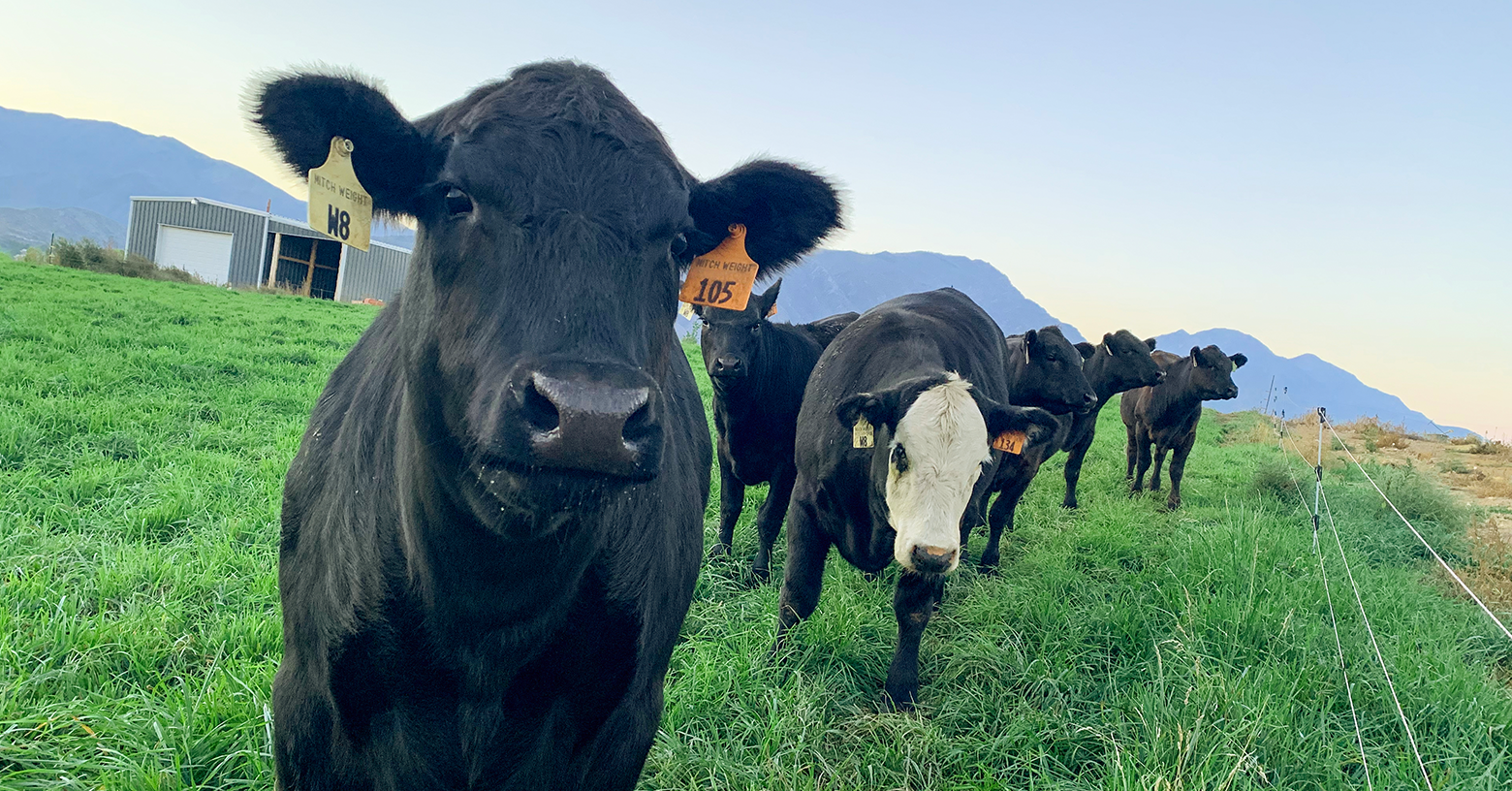
Grazing livestock on pastures or field crop residues is a great and economical way to meet the nutritional needs of your animals. Whether you’re a small acreage grower or have a large herd, properly managing the available forage is vital for maintaining healthy pastures.
Rotational grazing systems help growers maximize the economic capabilities of their acreage while ensuring pasture health and quality. Discover the benefits of rotational grazing systems for your large or small acreage operation to utilize pasture forages efficiently.
What Is Rotational Grazing?
Rotational grazing systems organize your livestock’s feeding to distinct sections of the pasture or paddocks. While livestock feed on a single section of the pasture other sections can rest and regrow. Rotational grazing systems present benefits to your pasture and your livestock, whereas continuous grazing systems provide equal pressure across your entire pasture.
Here are three common rotational grazing systems for you to consider:
Simple Rotational Grazing
A simple rotational grazing system involves dividing a single pasture into smaller paddocks and rotating the livestock periodically. This system helps improve soil health and reduces the risk of overgrazing by allowing the grass to recover between grazing periods. It also gives livestock access to fresh vegetation, which can improve their nutrition and overall health. While simple rotational grazing may not be as intensive as other systems, it can still be an effective and sustainable way to manage livestock on your farm.

Intensive Rotational Grazing
This system involves dividing a pasture into smaller paddocks using non-permanent fencing and rotating the livestock more frequently. Doing so gives the grass more time to recover and grow, leading to healthier pastures and more nutritious vegetation for your livestock. Intensive rotational grazing also allows for a higher stocking rate, which can increase production and profitability. However, monitoring grazing closely is important to prevent overgrazing. Intensive rotational grazing can be a sustainable and efficient option for growers looking to maximize their pasture and livestock production.

Adaptive Multi-paddock Grazing
Adaptive multi-paddock rotational grazing is a more complex grazing system gaining popularity. This system involves dividing individual pastures into many small paddocks using non-permanent fencing and moving the livestock based on the grass's condition and the animals' needs. Doing so gives the grass ample time to recover and grow, resulting in healthier pastures and more nutritious vegetation for your livestock. This system also allows for a higher stocking rate, increasing production and profitability. However, it requires a lot of planning and management to ensure that the livestock are not overgrazing and that the paddocks are rotated in a way that maximizes the health of the land.
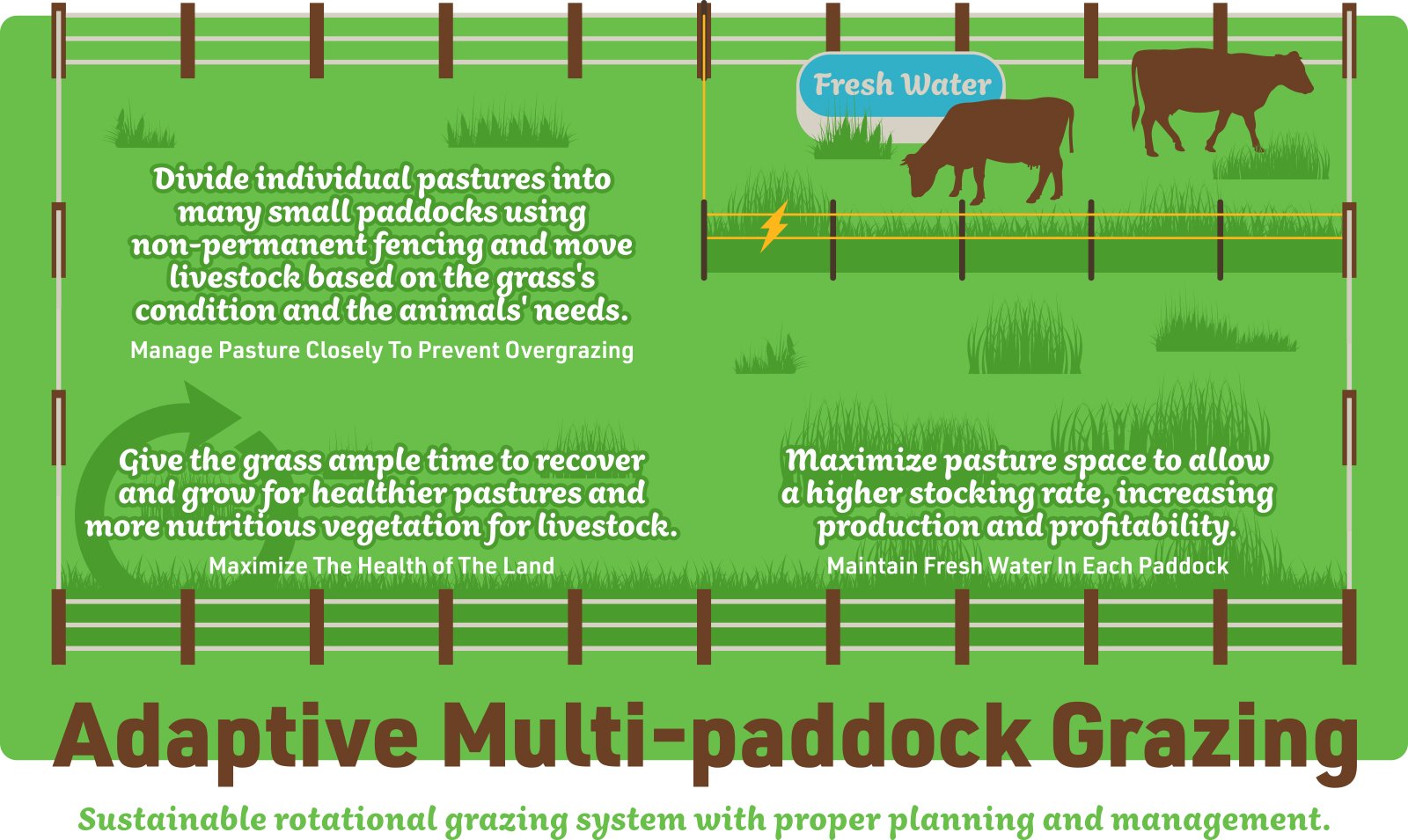
Rotational Grazing on Rangelands
The benefits of rotational grazing on forage health and cattle productivity can be applied to your private pastures, fields, and grazed rangelands. It is common for ranchers to utilize a continuous grazing system where cattle are introduced to the range and allowed to graze the entire area for a determined amount of time without restriction. However, introducing a rotational system can help reduce traffic in desirable feed areas and promote better utilization of the entire range compared to a strictly continuous system.
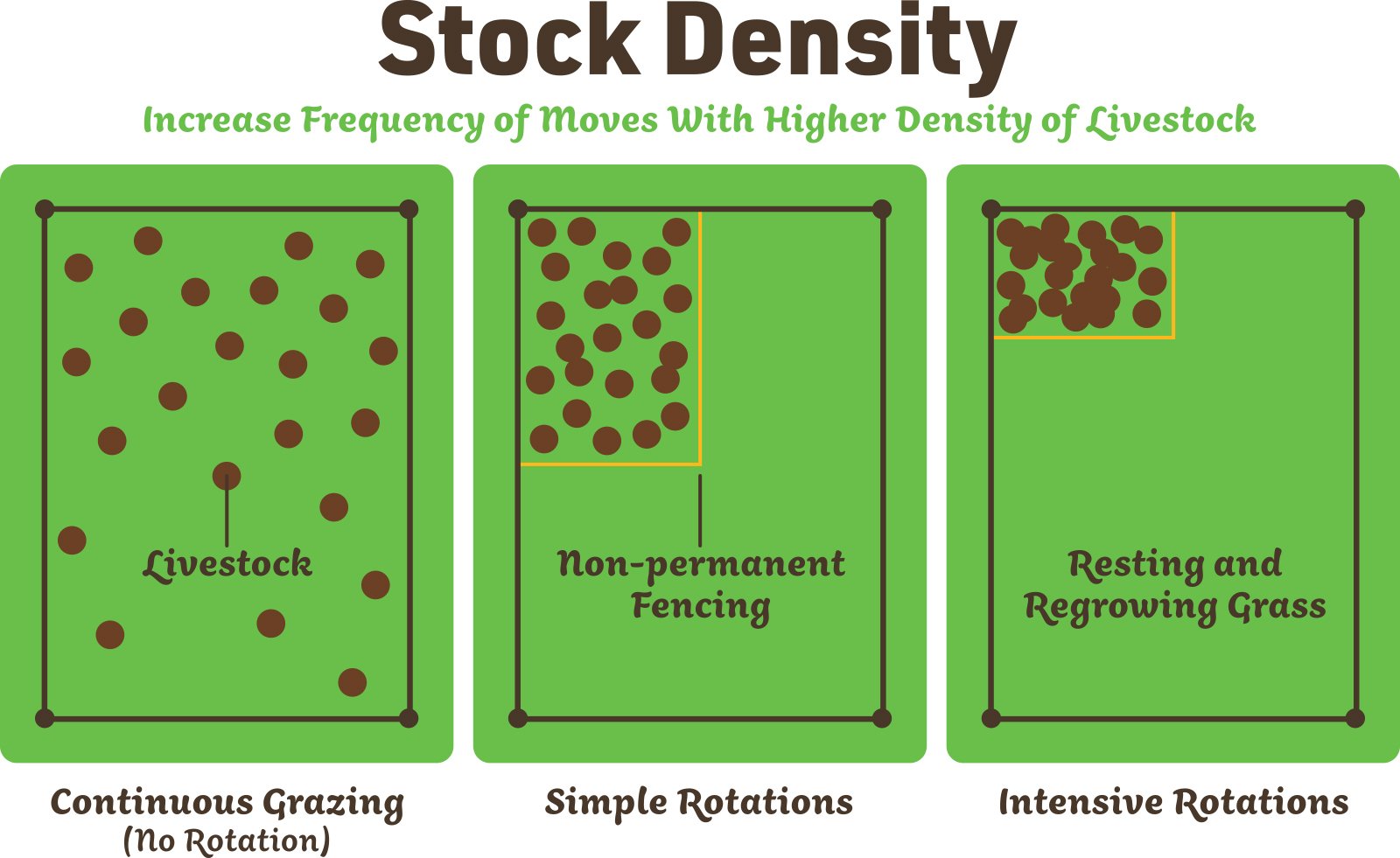
Key Features of a Rotational Grazing System
Quality Forage
Implementing an effective rotational grazing system requires high-quality forage that meets the nutritional needs of your livestock. When establishing new pastures from seed, select varieties that will do well in your specific soil conditions and provide adequate nutrition.
IFA’s Grass-Fed Beef Pasture Seed is optimized for intermountain pastures to provide the best nutrition to grazing livestock. Reach out to an IFA crop advisor before planting. They can analyze your soil and climate conditions to provide the best seed and fertilizer recommendations to meet your goals.
It is important to allow grass to reach its optimal height when establishing and grazing pasture. Dennis Christensen, an IFA Nutritionist, explains the nutritional value of allowing grass to reach optimal levels before grazing:
“The optimum level or height to graze your pastures is to start when the pastures are about 12 to 14 inches high. That is when we'll get the most nutritional value out of these pastures, and we want to keep those cattle in that pasture until it's grazed 20 to 25%.”
Learn more about IFA's Grass-Fed Beef Irrigated Pasture Seed mix for all livestock
Fencing Solutions
Fencing is crucial for effective rotational grazing systems. Depending on the type of grazing system, you will need permanent or non-permanent fencing materials. Quality wood or metal T-posts and livestock fencing wire are ideal for permanent fencing enclosures. Use these for your border fences and simple rotation systems.
Using an intensive or adaptive rotational grazing system, you will need non-permanent fencing such as electric wire and Step-In posts. Ensure you have the appropriate electric fence unit that can supply the right amount of voltage for the area you are using. This will help keep livestock from grazing outside your desired boundary.
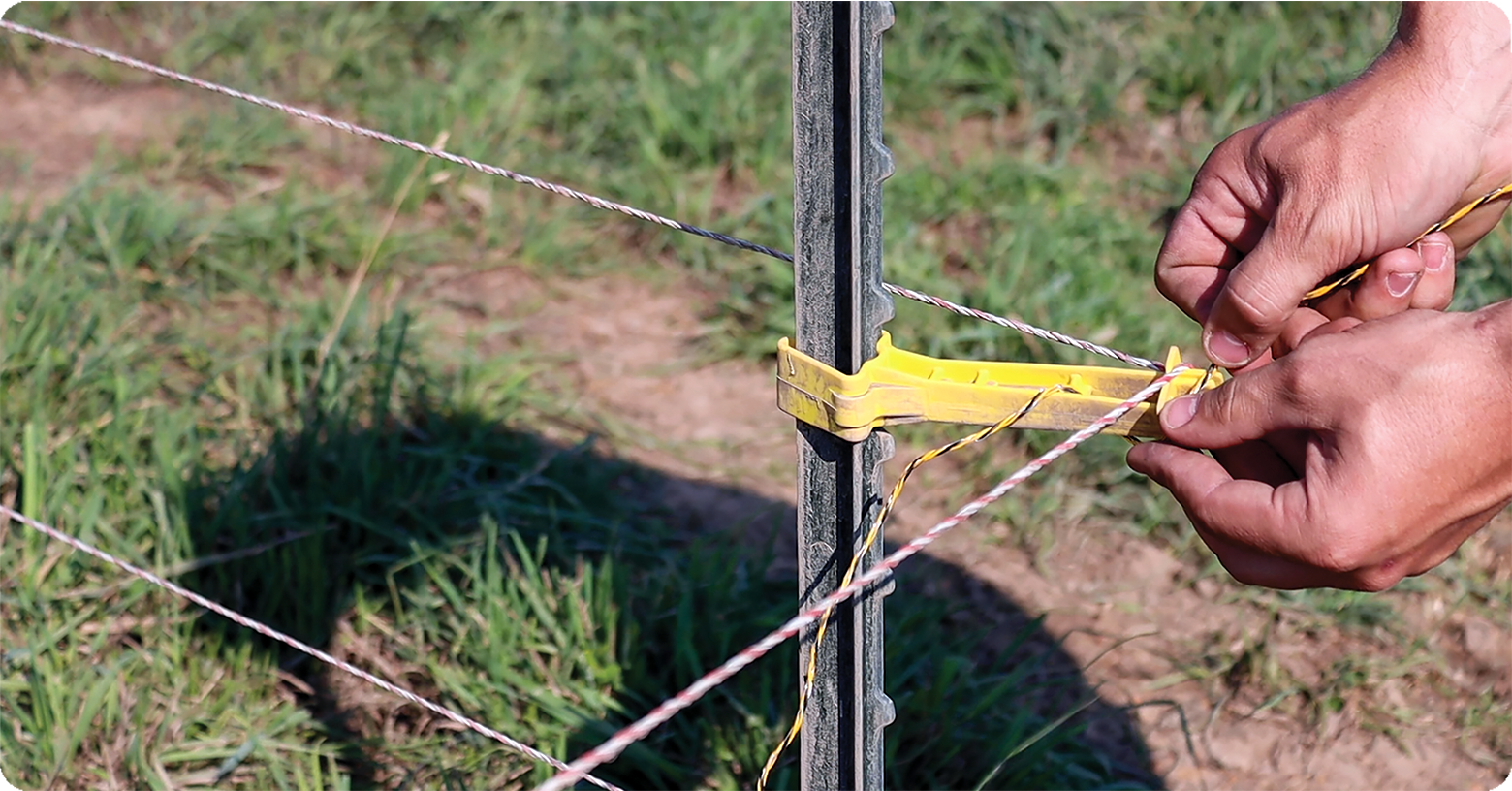
Water Sources
Alongside forage, your livestock must have access to fresh, clean water in each pasture or rotational area. Depending on your pastures and available resources, you may need to supply water using stock tanks.
Livestock need an average of one gallon of water per 100 pounds daily–this increases with hot temperatures and if cows are lactating. Ensure each pasture you are rotating to can supply the appropriate amount of water to meet your livestock’s needs.
Herd Size
When establishing a rotational grazing system, herd size will be important in determining which systems work best and how many pastures you need for rotation.
Ensure that your pastures can provide enough forage for your livestock. If your cattle are not maintaining or gaining weight as desired, you may need to increase your pasture areas or reduce your herd size.
How To Start Rotational Grazing With Your Herd
Herd Management
Introduce livestock to a range or pasture that is well established. It is best to give newly seeded pastures 10-12 months to grow and establish strong root systems before grazing.
Depending on your rotational grazing system, you must carefully monitor your pastures and livestock. Ensure your livestock maintain or gain weight at your desired rates by constantly assessing their body condition scores. If your livestock fail to meet your expectations, you may need to provide more pasture areas or address your herd management strategies.
Each pasture is unique, but it is generally best to provide one acre of pasture per cow with a rotational grazing system.
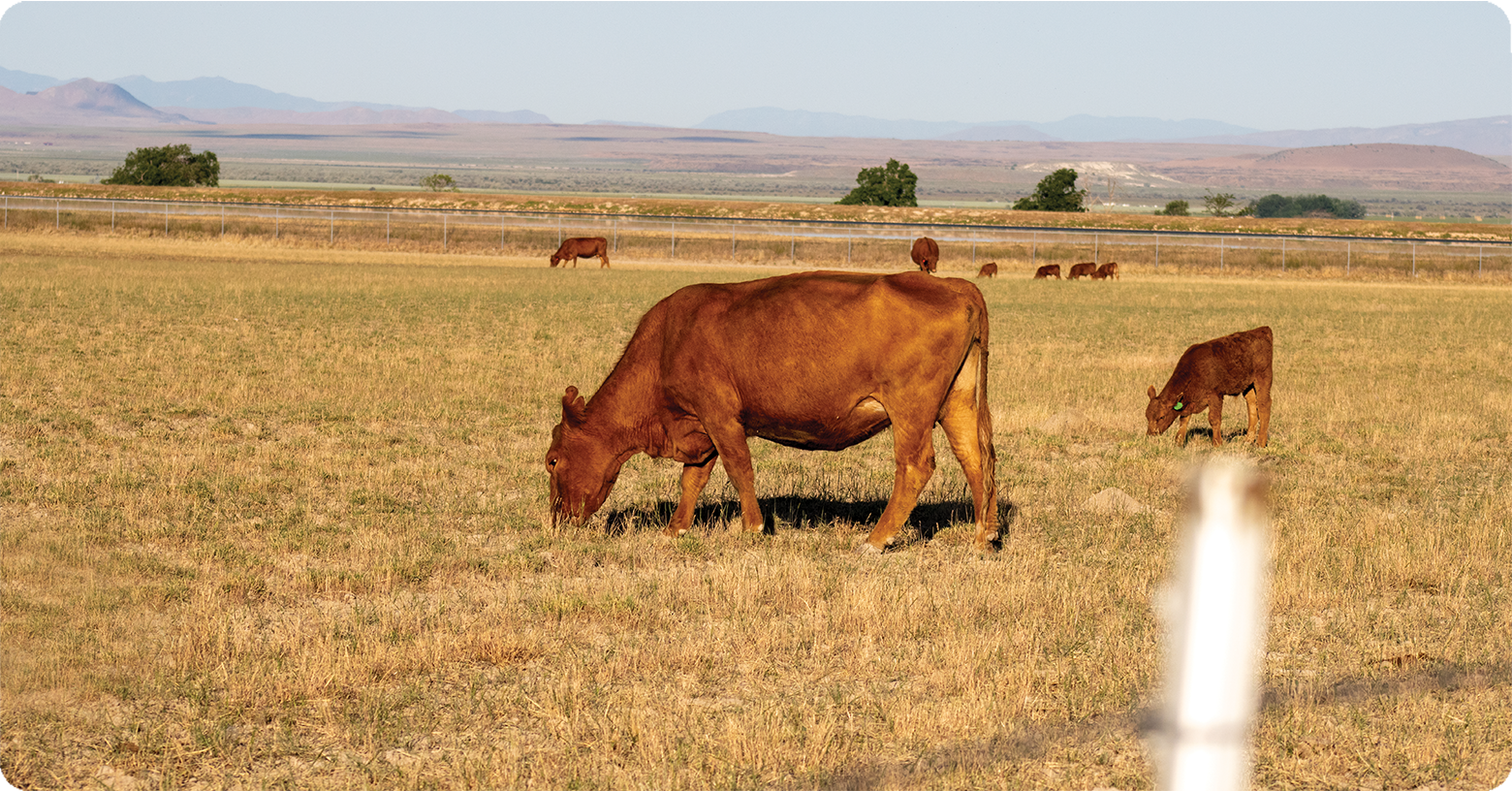
Nutritional Supplements
Grazing livestock requires diet supplementation to provide nutrients and minerals lacking in their forages. It is important to provide livestock with salt and nutrient tubs that complement the grasses in your pasture.
IFA’s ICBM Mineral is specially designed to complement the nutritional quality of pastures established using IFA’s Grass-Fed Beef Seed. The mineral includes properly balanced nutrients lacking in many intermountain pasture forages.
See how ICBM Mineral supplement improves livestock production
Pasture Management
Monitor your pasture vegetation closely. Depending on your goals, leaving a stubble height of three to four inches in the spring and four to five inches in the fall is important. This will help your grass recover faster for when cattle return.
Additionally, ensure your facilities are maintained by regularly checking your fences for holes, problems, and water sources. Maintaining your fencing and resources ensures cattle remain in your desired pastures and prevents possible overgrazing of other areas.

Maximize Livestock Forage
Rotational grazing is a great way to maximize the profitability of your rangeland or pastures. Get started with the proper fencing materials and stock tanks by visiting your local IFA Country Store.
A knowledgeable staff member can help you find the right tools and connect you with an IFA Agronomy or Feed and Nutrition expert for the best recommendations on pasture management and livestock supplements.
Information for this article was provided by Dennis Christensen, MS, PAS, IFA Feed & Nutrition; Kash VanTassell, IFA Fencing & Livestock Equipment Category Manager; and Tyler Stinson, IFA Associate V.P., Farm Supply Marketing.





